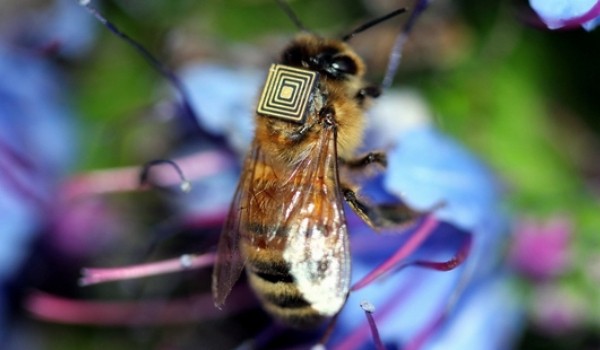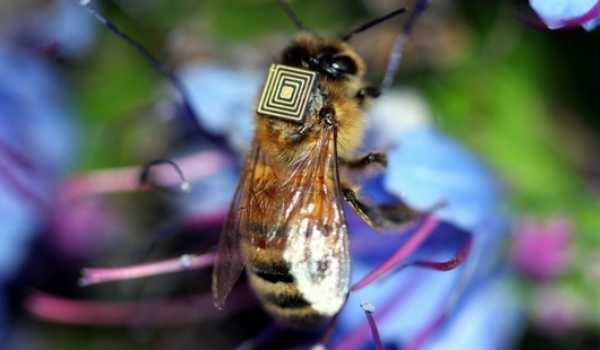Last spring, Raglan beekeepers reported the unexplained disappearance of bees. Similar losses were reported in the Wairarapa and central North Island regions. Thousands of colonies of bees were reported missing on the western side of the Coromandel Peninsula, resulting in production losses of between 45 and 65 per cent of their honey crops.
A national survey of beekeepers will provide a “starting point” to explore the potential causes behind colony losses in New Zealand. The online survey, conducted by Landcare Research, will gather baseline information from beekeepers about colony loss and survival to track changes in the future.
If you’re a bee keeper and would like to take part in the survey go to: http://surveys.landcareresearch.co.nz/s3/NZCOLOSS
Around the world, there are reports of high colony losses. In New Zealand, while hive numbers have significantly increased over recent years, there has also been a surge in unexplained colony losses. Diseases, pests, pesticides, starvation and overstocking have been blamed, but the evidence is largely anecdotal.

In Australia, the CSIRO is going high-tech to investigate what is happening with tiny electronic sensors on their backs as part of a “swarm sensing” program to obtain a bee’s-eye perspective on the cause of the alarming rise in the insects’ mortality rate. The sensors are tiny radio frequency identification (RFID) tags measuring 2.5 x 2.5 millimetres and weighing 5.4 milligrams supplied by Intel.
To attach one of these devices to a bee, the insect is briefly refrigerated in order to slow down its metabolism. Then the tag is secured to the bee’s back with an adhesive. Dr de Souza said the tag weighs about one-third of the bee’s body weight. He said the tag causes a slight change in the way a bee flies and results in it only being able to carry two-thirds of its normal payload of water, pollen and nectar.
The data will enable scientists to compile a comprehensive three-dimensional model of bee activity and to visualise the insects’ movements and flight paths.
The program, which began in Tasmania 18 months ago, is now also being used in Brazil. Dr de Souza said he has had many inquiries from other parts of the world and hopes to extend the project soon to New Zealand, Mexico, Costa Rica, Argentina and the United Kingdom. Bees in the radioactive area of Chernobyl, in Ukraine, will also be part of the study.
To date, 15,000 bees in Australia and Brazil have been fitted with the RFID tags.
NZ Plant and Food Research pollination scientist Dr David Pattemore said miniature RFID tags had already been used to study insect behaviour in New Zealand, including bees, for well over a decade – but adding it to a range of new sensors would produce large and valuable new datasets.
“The real innovation here is the partnership with Intel that allows for collection of data from a number of sensors and RFID tags simultaneously through Intel’s breakout board kit,” Dr Pattemore said.
“The impact of this technology will depend on the set-up costs of the system, which will determine how many researchers around the world can utilise it.
Initially in New Zealand, a survey of beekeepers is being used with researchers are turning to beekeepers for their help to protect the $5.1 billion New Zealand industry. Apiarists – from commercial to hobbyist – are being asked to take part in the country’s first colony loss and survival survey, which started on Monday 24th August.
New Zealand Bee Colony Loss and Survival survey director Pike Brown said the survey would provide an accurate picture of the country’s bee industry.
“The data from the survey will allow policy makers, industry groups and beekeepers to make better decisions on how to preserve New Zealand’s bee populations,” Dr Brown said.
The survey adheres to international standards to allow for worldwide comparison. However, there are a number of questions that are specific to the New Zealand industry and conditions, he said.
Federated Farmers Bee Industry Group chairman John Hartnell said bees are critical to the country’s agricultural and horticultural industry and must be protected. Many crops rely on bee pollination, he said.
“Looking ahead, this survey will help the industry to form a framework for building a long-term picture of annual trends and explore the potential causes of losses and ways to prevent them.”
National Beekeepers’ Association (NBA) of New Zealand chief executive Daniel Paul said the survey was a “starting point” to protect bees.
“The survey will provide a wealth of benchmark data that will facilitate apiary management,” Paul said.
To help raise awareness about the importance of bees, the NBA has declared September Bee Aware month.
The colony loss and survival survey is funded by the Ministry for Primary Industries, National Beekeepers Association of New Zealand, Federated Farmers Bee Industry Group and Agcarm.
If you’re a bee keeper and would like to take part in the survey go to: http://surveys.landcareresearch.co.nz/s3/NZCOLOSS
Participants will remain anonymous.
Scientists turn to ‘bee-tags’ to help halt the honey bee apocalypse
Date
August 25, 2015 – 12:01AM
71 reading nowRead later
Stephen Hutcheon
Stephen Hutcheon
Innovation Editor, The Sydney Morning Herald
View more articles from Stephen Hutcheon
Follow Stephen on Twitter Follow Stephen on Google+ Email Stephen
inShare
submit to redditEmail articlePrintReprints & permissions
Tony’s Tech Talks – Bee tracking
This week Tony investigates the worldwide problem of bee death.
Autoplay ONOFFVideo feedbackVideo settings
“My dream would be to see something around 1000 hives [added to the program] with a year,” he said. “If we get to that number we will definitely have very robust data. It will allow us to understand the stresses on bees in many aspects.”
Bee populations, especially in the northern hemisphere, have been decimated in recent years by a phenomenon called Colony Collapse Disorder (CCD) which causes bees to abandon their hives. Other threats include the destructive Varroa mite and, in Australia, a virulent gut parasite called nosemosis. The CSIRO says bee colonies are susceptible to the effects of pesticides, climate change and other environmental factors and the study will help identify potential remedies.
Read more: http://www.smh.com.au/technology/sci-tech/scientists-turn-to-beetags-to-help-halt-the-honey-bee-apocalypse-20150823-gj5xtx.html#ixzz3jlepVYiV
Follow us: @smh on Twitter | sydneymorningherald on Facebook

